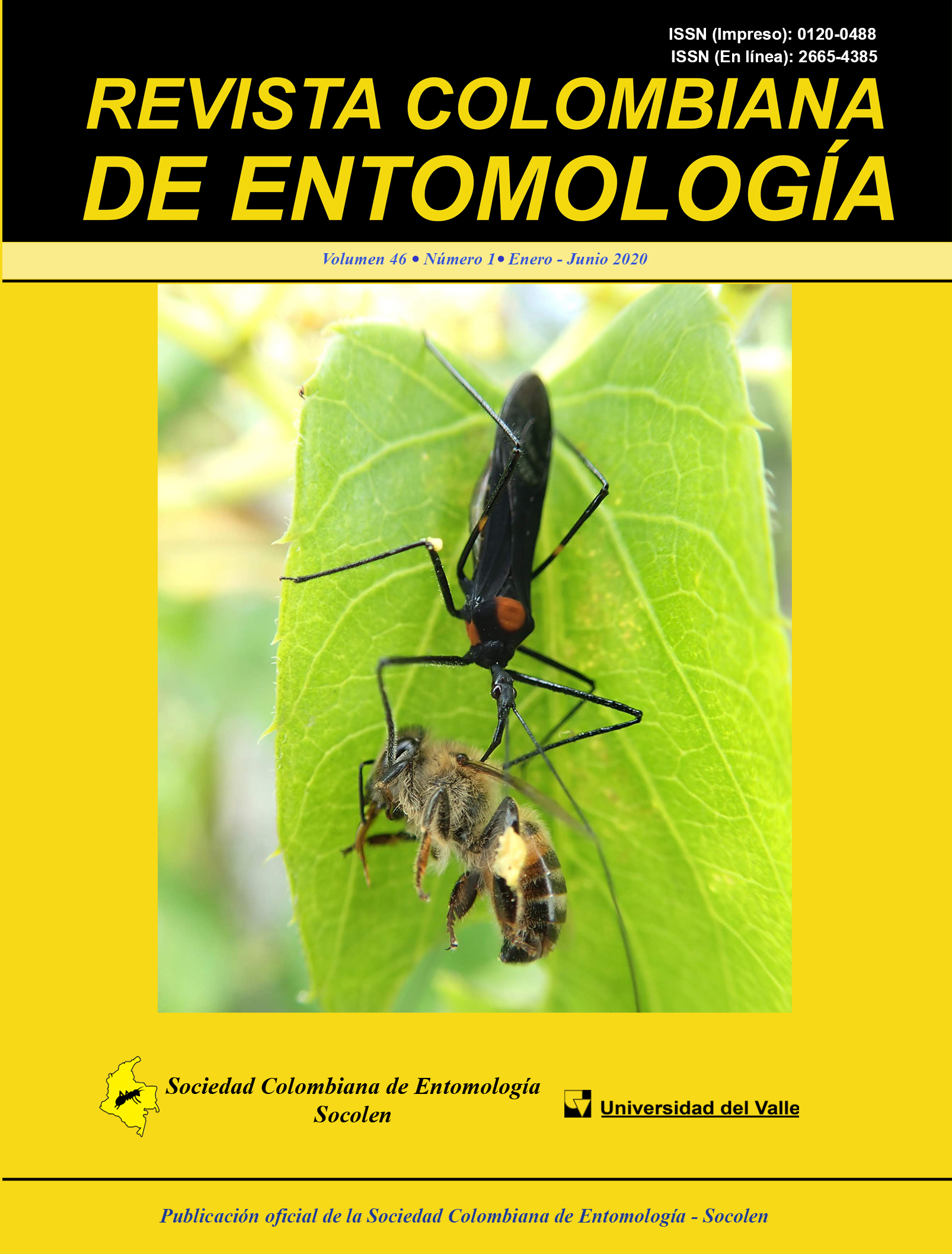Arthropods associated with Callisthene fasciculata (Vochysiaceae) canopy in the Pantanal of Mato Grosso, Brazil
Keywords:
Biodiversity, Callisthene fasciculata, communities, phenology, thermo-nebulisation, wetlandsMain Article Content
Studies on arthropods associated with tropical rainforest canopies contribute to a further understanding of forest canopy community dynamics and their relationship to the structure and function of this ecosystem. This study evaluated arthropod community composition in monodominant Callisthene fasciculata forest canopy throughout the high water and dry periods in the northern region of the Pantanal in Mato Grosso, Brazil, as a part of a project about arboreal canopy arthropods associated with monodominant areas in this region. Sampling was conducted on 12 individuals of C. fasciculata, six from the high-water season (2010) and six from the dry season (2011), using insecticide fogging. A total of 28,197 arthropods were collected. Hymenoptera (the majority being Formicidae), Diptera, Acari, Thysanoptera, Hemiptera and Coleoptera, were the most representative groups. Although the analysis did not show variation in the abundance of individuals between the high water and dry seasons, the arthropod community varied significantly in taxa composition. Opiliones, Embioptera, Ephemeroptera and Scorpiones occurred only during the high-water period, with Polyxenida and Strepsiptera occurring only in the dry season. Thysanoptera was more abundant in the dry season, showing a relationship with the beginning of the C. fasciculata flowering period. In general, the high water and dry seasons maintain distinct communities in this habitat, illustrating how the temporal variation in the phenology of C. fasciculata imposed by the Pantanal’s hydrological regime alters the composition of the associated arthropod communities in the canopy of these monodominant formations in the Pantanal of Mato Grosso.
Downloads

This work is licensed under a Creative Commons Attribution-NonCommercial-ShareAlike 4.0 International License.
Authors retain the copyright on their work and are responsible for the ideas expressed in them. Once a manuscript is approved for publication, authors are asked for a publication license for the term of legal protection, for all territories that allows the use, dissemination and disclosure of the same.

